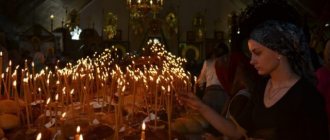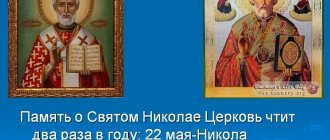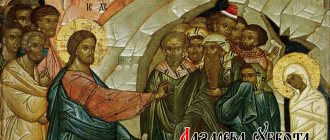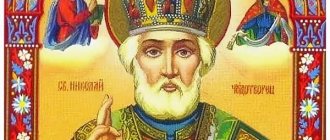Maslenitsa week 2022: what date does it start, traditions and meaning of each day
In 2022, Maslenitsa will begin on February 28 and last until March 6. Every day of pancake week carries a special meaning and tradition. Sib.fm found out what must be done on these days and what is strictly prohibited.
One of the famous and main traditions of the Maslenitsa holiday is baking pancakes. Our ancestors believed that the pancake symbolizes the Sun, since outwardly they are similar in shape and color. It is believed that every housewife should bake as many pancakes as possible so that there are many sunny days in the coming year.
In addition, during this period people often visit each other to treat themselves to various dishes. And at the end of the holiday, an effigy of winter is burned.
It is important to know that each day of pancake week carries a deep meaning, and each of them has its own meaning and customs that are customary to observe.
Monday (February 28) – Maslenitsa meeting
Previously, it was customary to live in large, friendly families, where the bride, as a rule, moved into the house of her husband and his parents. On the first morning of Cheese Week, fathers-in-law sent their sons' wives to visit their parents, and in the evening they themselves visited relatives. The most important thing on this day is not to offend your matchmakers and feed them properly.
In city squares, even a week before Maslenitsa, they began to create equipment for entertainment events. And on the first day of the week they completed the construction, for example, they installed swings, formed ice slides, and built snow forts. We tried to do everything as quickly as possible so as not to be distracted by it during the celebration.
The main custom of Pancake Monday is baking the first pancake. They did not eat it, but gave it to the poor so that they would remember the souls of their deceased relatives.
Tuesday (March 1) – Flirting
This day was entirely devoted to getting to know the boys and girls. Young people gathered to communicate and take a closer look at each other. This was done with a far-reaching goal. Ahead was Lent, during which weddings were prohibited, but after it, just on Krasnaya Gorka, the young people who met during flirtations could already get married. And those who were not interested in the bridesmaid ceremony invited relatives and friends to visit on this day. The more dishes there were on the table, the more respect the owner showed.
Wednesday (March 2) – Gourmand
In the middle of Maslenitsa week, the son-in-law went to visit his mother-in-law to treat himself to pancakes. His friends and relatives came with him. The mother-in-law was especially affectionate to her son-in-law that day and demonstrated her kindness to him in every possible way. After all, it was believed that the kinder the mother-in-law was to her son-in-law on this day, the better her daughter’s relationship with her new family would be.
Thursday (March 3) – Razgulay
It was on this date that Wide Maslenitsa began. All housework was stopped; doing housework in the coming days was considered a bad omen. Therefore, people left all their business and went to the square to have fun.
In Rus' there were many traditional entertainments typical of Maslenitsa Thursday: fist fights; horse and carriage rides; agility and endurance competitions; round dances; snowball games; assault and capture of a snowy town; making fires and jumping over fire; singing, dancing and, of course, eating pancakes.
It was impossible to stay at home that day. Because they believed that if you ignore the general fun, then sorrows and failures will overtake you.
Friday (March 4) – Mother-in-law's evening
On Friday, the son-in-law was supposed to receive his mother-in-law as a guest. The son-in-law's wife was baking pancakes for the arrival. The mother-in-law brought her friends with her to brag to them about what a good guy she married her daughter off to.
Saturday (March 5) – Sister-in-law’s gatherings
On Saturday, young daughters-in-law paid attention to their sisters-in-law - sisters and relatives of their husbands. The girls gathered to eat, chat and gossip. It was considered a good omen to give everyone who came to visit some small but pleasant gifts.
Sunday (March 6) – Forgiveness Sunday
This is the most important day of the entire Cheese Week. On Sunday, the conspiracy took place before Lent. Believers asked each other for forgiveness, and in response they heard “God will forgive, and I forgive.” On this day it was customary to remember the dead and visit cemeteries.
In addition, this was the last day when animal products could be eaten. All the holiday food that had been prepared during the week had to be eaten. The leftovers were either distributed to the poor or burned - it was considered a bad omen to throw away food or let it go to waste.
During the day it was customary to go to the bathhouse, and in the evening to gather in the square - of course, to ceremonially burn the Maslenitsa effigy. And the ashes that remained after the burning must be scattered across the fields so that there will be a good harvest next year.
Previously, Sib.fm wrote about when the pension would arrive due to non-working days on February 23 and March 8. Ecumenical Parents' Saturday - 2022: what date is it in February according to the church calendar, how to properly commemorate the departed, and why you should eat Lenten food during Lent.
PORTAL CONTACTS
The topic of our next conversation with Alexei Kashkin, candidate of theology, head of the biblical department of the Saratov Orthodox Theological Seminary, is the sanctification of time. Consecration of the day. Daily cycle of worship. How was this circle formed, what is its meaning, why is it necessary to live by its clock?
— To begin with, a question asked by many: why do the liturgical days begin in the evening?
- This is borrowed by Christianity from the Jewish tradition: and there was evening and there was morning - one day (Gen. 1 , 5). For Jews, the Sabbath—Sabbath rest—still begins before sunset on Friday.
— How did the liturgical circle develop historically? Once upon a time there was only one Eucharist...
- Yes, in the first centuries of Christianity, there was indeed the Eucharist and, as a rule, agape connected with it - the meal of love. But services such as Vespers and Matins developed very early. Vespers was intended to sanctify the dark time of the day, Matins - the light time. According to the Typicon, Vespers should be performed after sunset, Matins begins before sunrise, and ends when the sun has already risen. In the 3rd century, according to documents, Vespers was short and the main thing in it was the introduction of a lamp into the liturgical room. This was followed by a blessing, reading of the Holy Scriptures, a short prayer and dismissal.
Matins was separated from agape. In ancient times, morning worship included two biblical songs: the song of Moses and the song of the three youths in the fiery furnace (from the book of the prophet Daniel). Some psalms and the Great Doxology were also sung, which we still sing today: “Glory to God in the highest...” . In subsequent centuries, the rites of Vespers and Matins expanded, and hourly services appeared - hours, as we call them, 1st, 3rd, 6th and 9th.
— Why are the watches numbered this way? What is the content of hour-long services and when are they performed in the temple?
— Jews, contemporaries of Christ, as is known, lived in the Roman Empire and, accordingly, according to Roman time. The Roman day was divided - like ours today - into 24 hours and into two equal parts, light and dark, night and day. Each half, in turn, was divided into three hours. 1st, 3rd, 6th, 9th are the first hours of each quarter of the day; the first hour corresponds to six in the morning. Now it was about the sixth hour of the day, and darkness fell over the whole earth until the ninth hour (Luke 23:44 ). The book of the Acts of the Apostles tells us that it was customary to consecrate these hours with prayer: Peter and John went together to the temple at the ninth hour of prayer (Acts 3 :1); Peter, about the sixth hour, went up to the top of the house to pray (Acts 10 :9). Currently, in our churches, the first hour joins Matins (which, as we know, takes place in the evening), the third and sixth precede the Liturgy, and the ninth - Vespers.
Hourly services, or clocks, are designed not only to consecrate a certain time of day, but also to remind of the events of Sacred history that took place precisely during these time periods. At the service of the first hour, the journey of Jesus Christ from the high priest Caiaphas to the praetorium to the procurator Pontius Pilate and the false testimony against Him is recalled; Psalms 5, 89, 100 are read. At the third hour - the judgment of Pilate and the torture of the Lord, as well as the Descent of the Holy Spirit on the apostles (see: Acts 2 , 1-4): “Lord, who sent down your most holy Spirit by your apostles, do not take that good one away from us.” . The sixth hour is the procession of the Savior to Golgotha, His crucifixion, darkness throughout the entire earth: “And on the sixth day and hour on the Cross, the daring sin of Adam was nailed into paradise, and the handwriting of our sins was torn apart...” . The prayer of St. Basil the Great, which is so joyful to hear before the Divine Liturgy - “...but with Thy love our souls are wounded, so that we always look to You...” - is also included in the sixth hour. Finally, the ninth hour, Death on the Cross: “Who at the ninth hour tasted death for our flesh, put to death the wisdom of our flesh, O Christ our God, and save us.” It also speaks of the suffering of the Mother of God, seeing Her Son on the Cross: “... who gave birth to You says tearfully: the world rejoices, receiving deliverance, but My womb burns, beholding Your Crucifixion.”
- So, the performance of the hourly services, or, as we used to say, the reading of the hours, is intended to support in us the memory of New Testament events, to help us live according to the Gospel time?
- Essentially, yes. Perhaps that is why the Russian Orthodox Church, unlike some other Orthodox autocephalous churches, preserves this tradition: our hours are celebrated in all parish churches, and not just in monasteries, as, for example, in Greece. At the same time, we have to bitterly admit that we forget about the meaning of the hourly services, we cease to feel it, we cannot correlate our time - our own current day - with the time of the Gospel events. However, the Church is always designed for the highest state of the human spirit, better than what we can bring to it today. Therefore, she does not give up on what seems “too difficult” for us today. The hours are a secondary service compared to Matins and Vespers, but they, framing the main services, serve for us as spiritual steps to them. And if we give ourselves the trouble to be attentive while reading the clock, we will feel it.
- Let's go back to the beginning of the day, in the evening. Why do we serve Matins in the evening, after Vespers, and all this, together with the first hour, is called the All-Night Vigil?
— The concept of “all-night vigil” came to us from the ancient Jerusalem monastic rule, according to which the monks spent the night before a church holiday and simply before Sunday in prayer, without sleep. The statutory all-night service began after sunset and lasted, apparently, eight to ten hours. It included numerous teachings, readings of Holy Scripture and patristic works, and ended with Matins. “Glory to You, who showed us the light,” was heard precisely when the worshipers saw the first ray of the sun. How realistic is this in our parish practice? Which of us is capable of spending every night from Saturday to Sunday like this? Well maybe twice a year.
The position of Matins in our liturgical practice is truly problematic: in its content it refers specifically to the morning - “let us fulfill our morning prayer to the Lord ,” but we perform it in the evening. Voices calling to correct this and perform Matins in the morning are heard periodically in the Church. However, here the question arises: how prepared are we for this? Will this become a problem for us? Imagine: evening worship, that is, actually, one vespers - thirty to forty minutes, but in the morning - matins, hours 1, 3, 6, Divine Liturgy - all together more than four hours. It should be emphasized that the Divine Liturgy is not included in the daily liturgical circle we are now discussing - it is higher than the daily divine services. But in Greece, the “correct” practice (vespers in the evening, matins in the morning) leads to the fact that parishioners come only to the Liturgy, and the short vespers and matins, which begin at seven in the morning, are ignored.
— You and I always seem to be in an ordinary parish church; but if we want to live and pray in a monastery for some time, our daily cycle will turn out to be different, we will meet with Midnight Office and Compline. What kind of services are these?
— Compline in a monastery is, in fact, a general prayer for the coming sleep: it is performed after supper, that is, dinner, which is why it has such a name. At the end of Compline, the priest asks for forgiveness from the flock, and the monastics ask each other for forgiveness for the past day, after which they disperse to their cells. The Midnight Office, on the contrary, is a general morning prayer: it is called so because it has long been performed in monasteries before dawn. This is a short service, most of which is occupied by the reading of the 17th kathisma: the long 118th psalm, in which a person asks God to teach him the fate of Thy righteousness (7) - life according to the commandments, and prayers. Midnight Office and Compline have practically disappeared from parish practice: Midnight Office is celebrated only on Easter night, it precedes the day of the Resurrection of Christ, and Compline, Great or Little, is celebrated during the days of Great Lent and sometimes on the pre-celebration of the Nativity of Christ. It should, however, be emphasized that the celebration of Midnight Office and Compline in an ordinary parish church is by no means forbidden if the rector and parishioners have such a desire.
— The very concept of “daily circle” suggests that all the time of our lives should be sanctified by prayer, isn’t it?
- Yes, because ideally we are called to glorify God constantly, with our whole lives. And the services of the daily circle help us understand this. The ninth hour, which is read before Vespers, refers to the passing day. And with Vespers, as we have already said, the next day begins in the Church. This is the moment of meeting; it speaks of the continuity and infinity of praise.
“But it’s not at all easy to master all the services of the daily cycle.” In church there are often things we don’t understand: sometimes they read too quickly, sometimes we can’t make out the words of the chants. What can help us?
- Book of Hours. A book containing all the services of the daily cycle. Once upon a time it was available in every Orthodox home; children were taught the Church Slavonic language using it and at the same time were introduced to divine services. And now for some reason the Book of Hours is disappearing from our everyday life. Meanwhile, having read the same hours at home in advance according to the Book of Hours, you will understand them better, see their beauty, their meaning, and you will no longer be bored and languish during this service in the temple.
Photo by priest Makariy Tagaev
Newspaper "Orthodox Faith" No. 9 (509)
Maslenitsa, Easter and Parents' Day: dates of the main Orthodox holidays and fasts for 2022
We publish a calendar of Orthodox holidays, memorial days and fasts for 2022.
January 6 - January 18.
Christmastide (holy days). Christmastide - the period between Christmas Eve and Epiphany - lasts 12 days. The tradition of celebrating these days appeared in the 5th century during the period of the United Church. Christmastide has always been a national holiday, at this time class boundaries seemed to disappear and people congratulated each other, went to visit, played, had fun, sang, danced, caroled, gathered with families, and gave gifts. The carolers promised a rich harvest and a happy life to those who give treats, and all sorts of disasters to the stingy. Also, many were guessing at this time, although the Church was categorically against it. These customs have not changed today.
January 14.
Circumcision of the Lord. The holiday is celebrated on the eighth day after the Nativity of Christ according to Orthodox tradition. The Church remembers the gospel event when, according to Jewish law, the infant Christ received circumcision. Christians believe that this event symbolizes and proves the humanity and nature of Jesus.
January 18.
The Eve of Epiphany or Epiphany Christmas Eve. Believers adhere to strict fasting. And some don’t eat at all, drinking only a little water - until the Epiphany troparion (a special holiday chant) is sung in the church in the evening. In time, this approximately coincides with the appearance of the first bright star in the sky. Such abstinence in food and drink was established by the Church in memory of the ancient tradition: to strictly fast before a person receives holy baptism. On the Eve of the Epiphany, festive services are held in churches. On the night of Epiphany, the Great Blessing of Water takes place.
January 19.
Epiphany, or Epiphany. This is a Christian holiday established in honor of the baptism of Jesus Christ in the Jordan River by John the Baptist. It is believed that at Epiphany, water acquires healing properties that last throughout the year. A favorite Russian holiday tradition is swimming in an ice hole; it was invented by the people themselves. For the last few decades, this has been the most popular ritual among Russians. Many clergy believe that such a tradition has nothing to do with spiritual life, because for many it is nothing more than just entertainment.
The 14th of February.
Week about Zacchaeus the Publican. Orthodox Christians are beginning to prepare for Lent. They remember the Gospel story about the publican Zacchaeus.
February, 15.
Meeting of the Lord. This twelfth eternal holiday was established in memory of the bringing of the Savior to the Cathedral on the 40th day after birth to perform the established sacrifice. On this day, believers consecrate candles in churches and keep them all year, burning them one by one during home prayer.
February 26.
Universal Parents' Saturday. Day of special remembrance of the dead.
February 28 - March 6.
Maslenitsa, or Cheese Week. Maslenitsa is not only one of the most anticipated and beloved holidays among the people, but also one of the longest. Its dates are flexible and depend on Easter: Maslenitsa begins 56 days before the Christian holiday.
March, 6.
Forgiveness Sunday. This is the last Sunday before the start of Lent and the bright holiday of Easter. Immediately after it begins a 40-day strict fast. The Church calls on believers to make peace with everyone and forgive everyone before entering Lent.
March 7 - April 23.
Lent is the longest and strictest in the church calendar.
March 19.
Ecumenical Parental Saturday of the 2nd week of Lent. Day of special remembrance of the dead.
26 March.
Ecumenical Parental Saturday of the 3rd week of Lent. Day of special remembrance of the dead.
March 27.
3rd week of Lent, Worship of the Cross. On the third Sunday of Great Lent, the Holy Cross is brought to the middle of churches for worship by believers. This is done in order to recall the suffering and death of the Lord and strengthen people to continue fasting.
April 2.
Ecumenical Parental Saturday of the 4th week of Lent. Day of special remembrance of the dead.
April 7.
Annunciation of the Blessed Virgin Mary. On this day, believers remember the Archangel Gabriel’s announcement to the Virgin Mary that she would give birth to the Son of the eternal God and save people from their sins.
April 16.
Lazarus Saturday (Saturday of the 6th week of Great Lent). The date of the holiday depends on what day Easter is celebrated. On Lazarus Saturday, the Church remembers the miracle of Christ’s resurrection of righteous Lazarus four days after his death. The holiday is also called “little Easter.”
April 17.
Palm Sunday (entry of the Lord into Jerusalem). The holiday is dedicated to the solemn appearance of Jesus Christ in Jerusalem on the eve of His martyrdom and death and is celebrated a week before Easter, on the sixth Sunday of Lent.
April 18 - 23.
Holy Week is the last week of Lent, which precedes one of the main Christian holidays - Easter. For Orthodox believers, this is the most important period of the year, marking the last days of Christ's earthly life.
April 22.
Good Friday. Good Friday is a Christian day of grief and mourning, the last day of the earthly life of Jesus Christ. It falls on the fifth day of the last week of Lent and is dedicated to the memory of the suffering on the cross and the death of the Savior
April 24.
Holy Resurrection of Christ, Easter. One of the greatest religious holidays is dedicated to the gospel story of the miraculous resurrection of the Son of the Lord Jesus Christ from the dead.
1st of May.
Antipascha or Fomino Sunday. Weddings begin in the Church on St. Thomas Sunday (they have not been performed since Lent).
May 3.
On the ninth day after Easter, Orthodox Christians celebrate Radonitsa. On this day it is customary to visit cemeteries and remember the dead.
2 June.
Ascension of the Lord. The name of the holiday reflects the essence of the event - this is the Ascension of the Lord Jesus Christ to Heaven, the completion of His earthly ministry. This event is celebrated on the 40th day after Easter.
June 11.
Trinity Parents' Saturday. Day of special remembrance of the dead.
12 June.
Trinity Day, Pentecost. One of the most revered holidays of the Christian calendar, when the church remembers the descent of the Holy Spirit on the apostles on Mount Sinai on the 50th day from the resurrection of Christ and honors the Holy Trinity.
June 20 - July 11.
Petrov post. It does not have a fixed number of days. From what date it begins each year depends on the date on which Easter fell this year. He is not as strict as the Great and Uspensky. According to the clergy, Petrov's fast falls into the light category. Its charter is approximately the same as Rozhdestvensky’s. Meat, dairy products and eggs are excluded from the diet.
August 14 - August 27.
Assumption Fast. It is associated with one of the most important events in Christian history - the Dormition of the Blessed Virgin Mary. According to church tradition, on this day the Virgin Mary ended her earthly existence. The Assumption Fast is the shortest among the multi-day fasts. The severity of the meal remains the same as during Lent.
August 19.
The Transfiguration of the Lord belongs to the twelve feasts. Christians began celebrating it in the 4th century. It is believed that Jesus on this day revealed his divine nature to the disciples so that in the hour of testing they would not waver or waver in their faith. This miracle showed what kind of transformation awaits man in the Kingdom of Heaven. And on this day the church calls parishioners to spiritual transformation.
August 28.
Dormition of the Blessed Virgin Mary. The holiday is celebrated on the day of the death of the Blessed Mary. It is also called the second Easter. On this day, they remember the end of the life of the Blessed Virgin Mary and her ascension into heaven.
September 21.
The Nativity of the Blessed Virgin Mary and the Ever-Virgin Mary is a great Christian holiday. In Orthodoxy, it is one of the twelve, that is, it is one of the twelve most important holidays after Easter.
September 27.
Exaltation of the Holy Cross. The holiday was established in connection with the events of the 4th century, when the holy Queen Helen, mother of Emperor Constantine I, found in Jerusalem the greatest Christian shrine - the cross on which Jesus Christ was crucified. This day is a day of strict fasting.
October 14.
Protection of the Blessed Virgin Mary. This holiday was established in memory of the appearance of the Mother of God in the 10th century in the Blachernae Church in Constantinople. Since then, this has come to be understood as a sign of the Mother of God’s protection to all those who pray and resort to her intercession.
November 5.
Dmitrievskaya parent's Saturday. Day of special remembrance of the dead.
November 19.
Michaelmas Saturday. Day of special remembrance of the dead.
November 28 - January 6, 2023
Christmas post. This post is the last one of the year and lasts 40 days. Meat, dairy products and eggs are excluded from the diet.
December 4.
The Presentation of the Most Holy Theotokos into the Temple is a great Christian holiday, which, according to church tradition, was established when Mary, the future Mother of God, was solemnly brought into the Temple of Jerusalem by her parents, fulfilling a vow to dedicate their child to God.
Subscribe to our channel on Telegram https://t.me/u24ruu.
Easter in Orthodoxy in 2022
Easter is the name given to the main event in biblical events. It means the Resurrection of Jesus Christ, and in Orthodoxy it is considered “a holiday, a triumph of celebrations.” It is customary to calculate the date of Easter based on the date of the vernal equinox and the first full moon following it. The first Sunday after all factors is the date of Easter.
In other religions, Easter is celebrated on different dates - some earlier, some later. But the date itself is not important, but the spiritual understanding of the event itself, which occurred in the name of saving people, is important. After death, Jesus Christ was able to resurrect and independently leave his tomb - a cave closed with stone.
In 2022, Orthodox Easter will take place on April 24.
Mid-April is the average range for Easter to occur. It is considered very early if it occurs in early April, and late if it occurs in early May.
On Easter they read the word of John Chrysostom, which says what joy came to everyone - both the poor and the rich, those who abstained during Lent, and the careless. Everyone can have fun and enjoy “...the feast of faith, enjoy the wealth of goodness.”
“Let no one cry for sins; for forgiveness has shined from the grave. Let no one fear death; for the death of the Savior has set us free.”
Along with Easter, the laity celebrates the hope that Christ gives after his resurrection.











